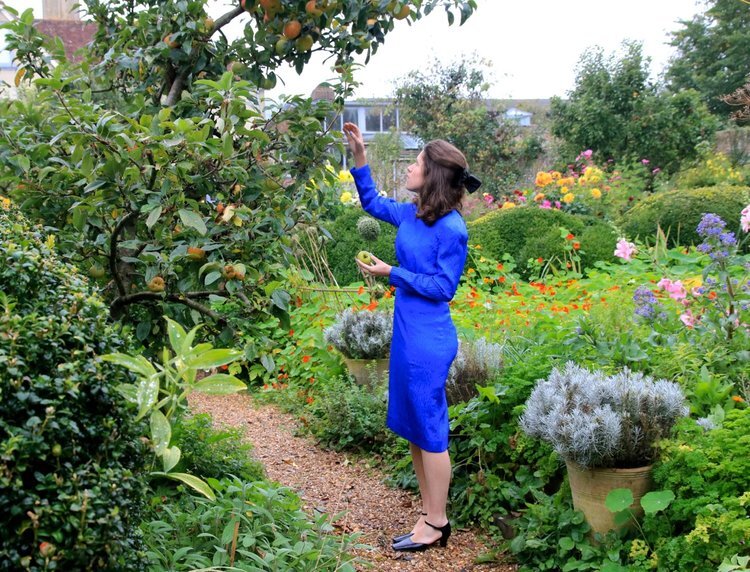
21.08.19

We went in search of oaks.
The oak tree. Such a grand, old tree, tall and distinguished. I can’t be certain, but I feel sure that the Oak is the first tree I learnt to recognise, with it’s distinctive ‘lobed’ leaves (this is the proper term for their shape), and it’s green smooth acorns in their tiny little cups, that, if you get them at exactly the right moment, slide out so satisfyingly with a gentle twist.
On our hunt for oaks we first visited Quercus floribunda, an old and prestigious oak, with a rather lovely trunk, that comes from East Asia in the Himalayas.
And then we found:
Quercus cerris, the Turkey Oak.
Quercus nigra, the Water Oak.
Quercus suber, the Cork Oak ‘provides the cork of commerce’
Quercus libanerris
Quercus trojana, the Macedonia Oak
Quercus velutina, the Black Oak
Quercus frainetto, the Hungarian Oak
Quercus michauxii, the Swamp Chestnut Oak or Basket Oak
A little oak research: Only two oaks are actually native to Great Britain – Quercus robur, The English Oak – this is the oak you would most likely associate with the words ‘Oak Tree’ and Quercus petraea, The Sessile Oak. The main difference between the two is the way the acorns grow – robur’s acorns grow at the end of their own little stalks, petraea’s grow straight from the leaves.
The Oak, Quercus is a member of the Fagaceae family, both Chestnut Trees Castanea and Beech Trees Fagus belong to this same family. There are more than 500 species of Oak (rather a lot) and they are monoecious, or as Wikipedia tells me - ‘(of a plant or invertebrate animal) having both the male and female reproductive organs in the same individual; hermaphrodite’. They live in the Northern Hemisphere, prefer a deep rich soil and not only do they produce acorns, they also produce catkins in spring.
Most importantly, not all oaks, have ‘oak’ style leaves - it turns out they come in all shapes and sizes, which is rather fun, but can make them slightly harder to spot.
The oaks we found:
And the Hydrangea.
Because they are currently in flower, and I just love them so much, my favourite always being Hydrangea ‘Preziosa’, as it looks at though someone has come along and painted all the flowers different colours from a paintbox – Hillier refers to it as ‘a handsome shrub’ – I quite agree. And special mention must go to Hydrangea, ‘Aborescens Annabel’ as she was looking particularly nice too.
It was a lovely Saturday of garden wandering – checking that labels were present and correct, and that the trees looked healthy. I am currently reading Richard Mabey’s ‘The Cabaret of Plants: Botany and the Imagination’ which I recommend to all. At it’s core – Richard asks us to step back and acknowledge that plant life isn’t just a back drop to our own lives, but instead, to consider that it has it’s own ‘plan’, perhaps it’s own ‘self, completely independent of us.
Wandering amongst the oak trees, in a part of the garden I rarely frequent made me appreciate these beautiful trees and the garden surrounding even more than usual.
We need these trees, far more than they need us.
I’m very pleased we found the oaks.
Alice xx
All Oak Trees and Hydrangeas photographed can be found at High Beeches Garden.